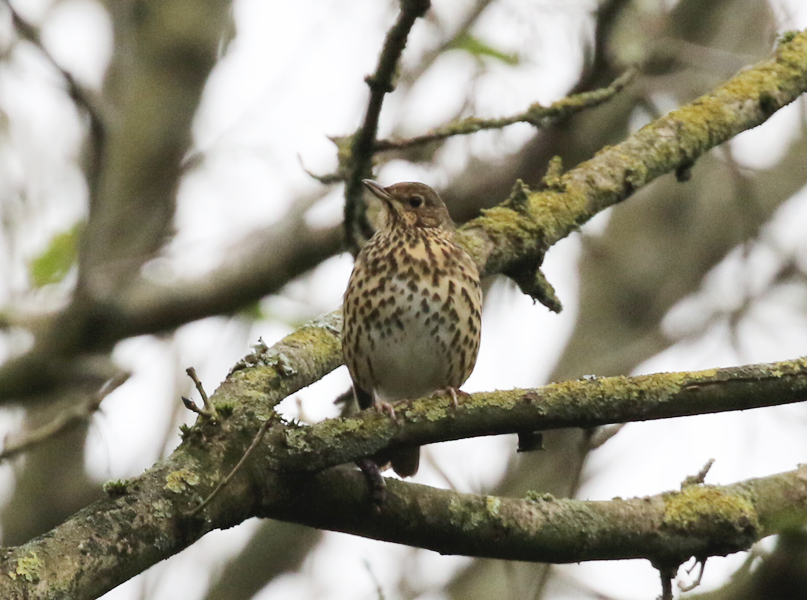
When a bird is named for its song it is a good indication that its vocalization is something that is worth listening to and when it is heard on a morning with very limited visibility the lack of other visuals really amplifies the effect of this bird’s rich and energetic song. In fact the word foggy would be more accurate, although less alliterative, so that when I came across a particularly cheerful Song Thrush at Riverside Country Park in North Kent, UK, my ears took over from my eyes to appreciate this song that I rarely hear. With the still air several Song Thrushes seemed to be enjoying broadcasting themselves across the area without being hampered by the competitive sound of wind noise and as a soundtrack to the eerie atmosphere created by the mist it was lovely. With one individual seemingly oblivious to my presence I was able to get into a position to video it singing and capture the attractive song with its liberal use of phrases of mimicry.
Song Thrush used to be a garden bird where I am from when I was a child but these days I have to go a little further to see them; a victim of over-manicured gardens and the associated chemicals. Indeed, such has been the decline in Song Thrush population in UK that it is red-listed, regarded as the highest conservation concern. However, the UK population is still over a million pairs and there has been some recovery of the population and certainly at this particular location the species was more abundant than I am used to.
Due to the mist (well…, fog) I struggled to see much so when I came across this vical bird I spent plenty of time listening and watching. Take a look at this video for yourself and enjoy the bird’s song.
If you lisen closely to this Song Thrush’s song you can hear snippets of mimicry of other birds; listen out for bits of Blackbird, Great Tit, Robin and Willow Warbler as well as other birds. In fact the song may be almost completely composed of mimicry, I am not sure. Taking photos of this bird in such light conditions was not easy but I managed a few.
For a few moments the fog parted and this bird came a little closer to me, allowing for a better photo.
Of course, as well as their wondeful song Song Thrushes are well-known for their distinctive feeding behaviour, smashing snails open by dashing them against rocks or “anvils” although they also take other creatures such as earthworms. However, recently I have seen them frequently feeding on berries alongside other thrushes including Blackbirds as well as migratory Redwings and Fieldfares. This is a fairly familiar behaviour to most birders and this charming book expands on this and other bird’s relationship with berries for those who like to learn more about birds and their behaviour – Birds and Berries. If you want to see Song Thrushes in autumn and winter then finding a profusion of berry trees is a good place to start.


 November 30th, 2020
November 30th, 2020  Nick
Nick 

 Posted in
Posted in  Tags:
Tags: 










What a beautiful pictures!
If you want to see more photos of birds, I share you my blog.
https://avesdecordobayargentina.blogspot.com